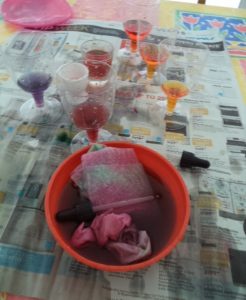This dancing buttons fairy water science experiment is a twist on the popular dancing raisins activity. It’s fun to try something a little different.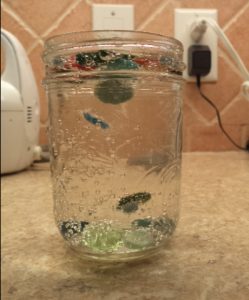
Raisins dance up and down in clear soda pop. We’re used to seeing things sink in water or float, but not usually both. The bubbles in the soda carry the raisins up. When the bubbles all pop, the raisins sink back down. We called the soda pop fairy water and tried some different items.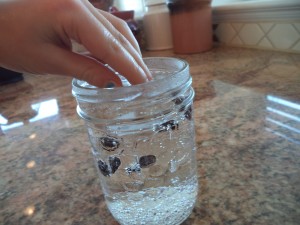
There were some shiny sequin shapes left-over from our fairy play dough fun. First, we had to check if they would sink in plain, ordinary tap water. When we placed them flat on the water in a jar, they floated but when we dropped them in sideways they would sink and stay on the bottom. Now that we knew they would float, we were ready to try them in the fairy water. Big Brother and Little Sister said they would float. Big Sister said they would do both. Baby Brother was napping and didn’t express his hypothesis, even though he has plenty of opinions at other times.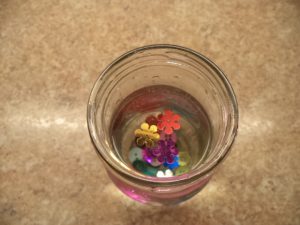
When we dropped the sequin shapes in the fairy water, they stayed on the top. The only way they would sink even a little bit was if we stirred them and poked them. So then we tried buttons. The kids looked thru the button box and choose 5 small ones each. We checked in the plain tap water that they would sink. They did. We talked about what would happen in the fairy water. Although the kids thought they would float, I suggested they might be too heavy. We put in all 15 buttons at once.
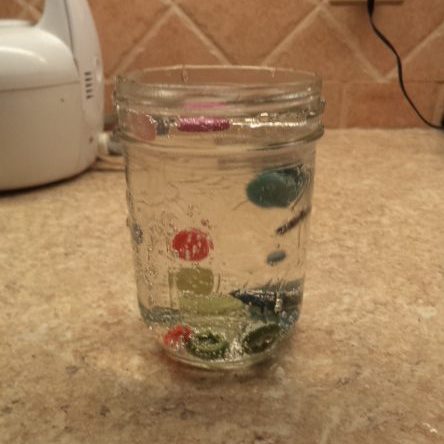
What a show! The buttons danced up and down and up and down. We watched them for the longest time and checked on them periodically after that. After about 15 minutes, there were fewer bubbles so the sequin shapes would sink a little if we poked them. It took longer for the bubbles to build up enough for the buttons to rise but there was still action.
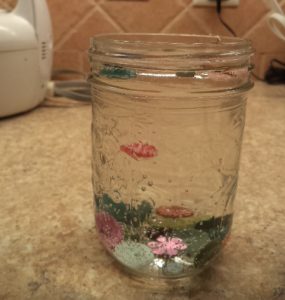
Simple science activities can be such fun. We’ve added a variation to the raisins to make our own dancing buttons fairy water science experiment. Any suggestions for what we can try next?
For more fairy activities, come and play on the 123kindergarten blog.

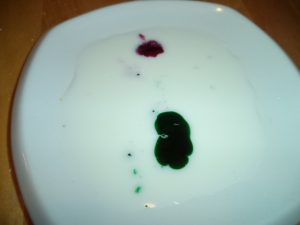
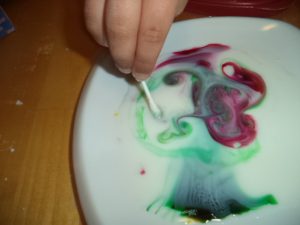
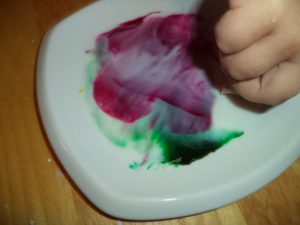
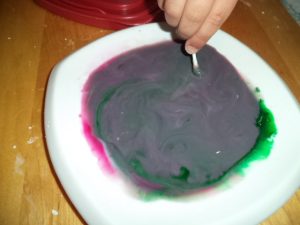
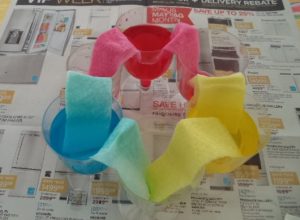
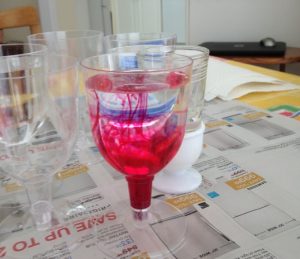 First, we placed 6 clear glasses in a circle. We filled 3 of them with water and squirted a couple of drops of different food coloring in each one. There was one glass of red, yellow, and blue. The other 3 glasses were empty. Big Sister said she thought the water would transfer from the full glasses to the empty ones all around. When I asked Little Sister what she thought might happen, she didn’t answer the question but volunteered to mix up all the colors.
First, we placed 6 clear glasses in a circle. We filled 3 of them with water and squirted a couple of drops of different food coloring in each one. There was one glass of red, yellow, and blue. The other 3 glasses were empty. Big Sister said she thought the water would transfer from the full glasses to the empty ones all around. When I asked Little Sister what she thought might happen, she didn’t answer the question but volunteered to mix up all the colors.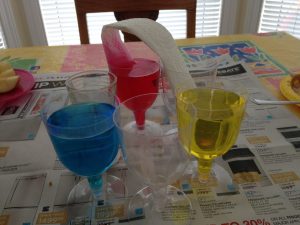 The next step is the double magic. We folded a length of paper towel and placed one end in a glass of colored water and the other end in an empty one next to it on both sides. We repeated this until we had what looks like 6 bridges, linking all the glasses. When we placed the paper towel in the red glass, it started moving down the dry end of the paper towel immediately.
The next step is the double magic. We folded a length of paper towel and placed one end in a glass of colored water and the other end in an empty one next to it on both sides. We repeated this until we had what looks like 6 bridges, linking all the glasses. When we placed the paper towel in the red glass, it started moving down the dry end of the paper towel immediately.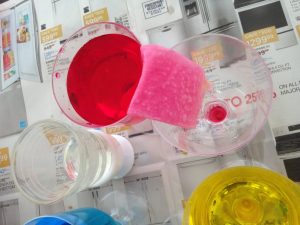
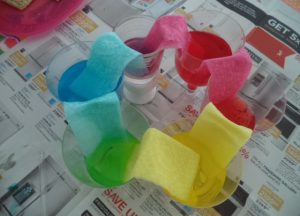
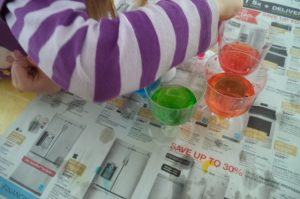
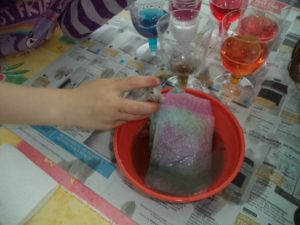 At this point, she used the paper towels to soak up the water in the glasses and squeezed the water out into the bowl. Now there was a messy concoction of towel and brown-grey water, beyond the original intention of this mixing colors messy play science experiment.
At this point, she used the paper towels to soak up the water in the glasses and squeezed the water out into the bowl. Now there was a messy concoction of towel and brown-grey water, beyond the original intention of this mixing colors messy play science experiment.